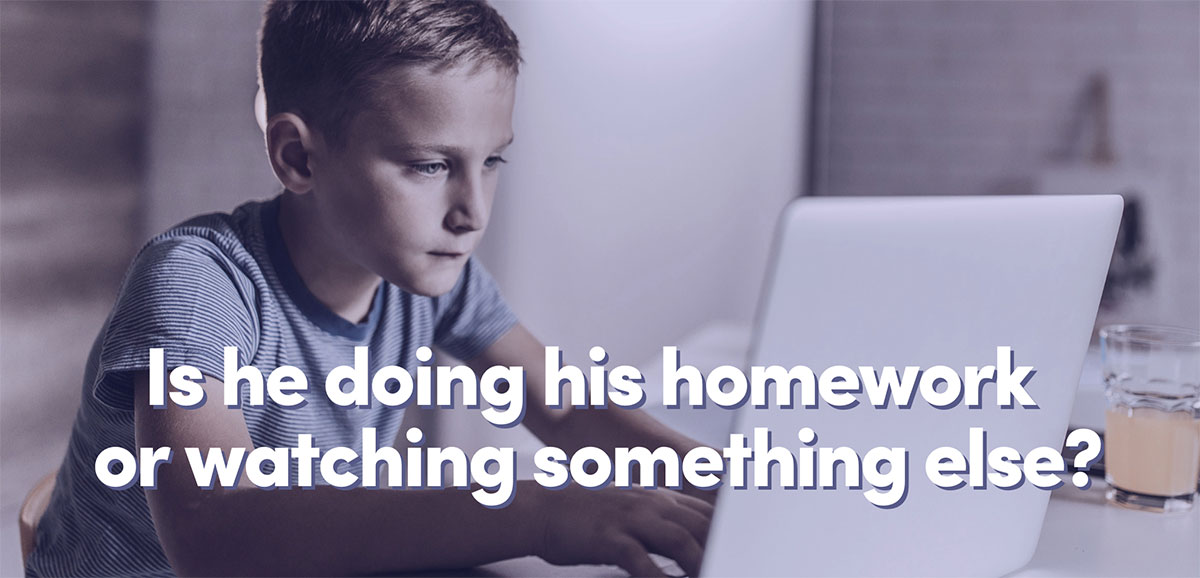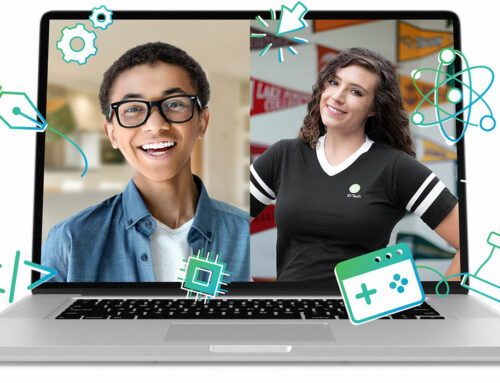
There are many ways that the internet can brighten up the learning environment of a homeschool, like science project ideas and art lesson videos, for instance! Unfortunately, there are also ways the internet can hurt your family if you don’t take proper steps to protect your children. Even if your kids access something inappropriate accidentally, the emotional and spiritual damage can be severe and lasting.
In our previous article about creating a safe internet environment, we talked about some advanced ways to step up your internet security. However, we recommend having more than one security net in place to make sure that the Pandora’s box of the internet is kept securely under control in your home.
The Canopy app is a parental control system that not only can help keep the internet safer, but can actually detect whether photos taken on your child’s phone or tablet are safe or if you as the parent need to be alerted to them. Parents can also cut off access to certain apps or websites altogether.
“Canopy is the only digital parenting app that detects and blocks pornography in milliseconds, before it reaches your child’s screen. With Canopy, parents can rest easy knowing their children are safe, no matter where their digital adventures take them.”
It’s an unfortunate and sad truth, but kids may be exposed to pornography on the internet if parents are not extra diligent. On average, boys are 13 years old and girls are 14 years old, and as many as 93% of boys and 62% of girls have seen online pornography by age 18. It probably will not be by choice and may happen at a younger age than you’d expect. Many times, popups or advertisements are the culprit and can quickly rob the innocence from your child, searing those images in their mind.
As a homeschool parent, where are some of the places that your child might be exposed to pornography, no matter how many precautions you take to protect them? How will you even know if they have seen it? And, how can you prepare them to respond when they do run into it?

Where are kids exposed to pornography?
- Porn may pop up accidentally. Your child may not go out looking for porn, but they could accidentally see images or websites when they are searching for something else. Without phones, tablets, and computers protected by a parental control app like Canopy, there’s nothing to stop a mistyped word or unexpected search result to pop up a pornographic image or video that your child sees unintentionally.
- Porn may be shared with them. Someone they know may show them an image or video. It could be the person trying to bully the child, or the digital equivalent of “taste this—it’s gross” that kids sometimes do with food. They may receive an anonymous message as a text or in a social media app with a link to pornography, as well. A child might also receive a spam message to their phone or email.
- Porn may be encountered while searching for the answers to questions. Kids will naturally have questions about their bodies, sex, and terms they hear but don’t understand. As they seek information on those questions, they may encounter explicit websites in the search results.
How to prepare a child to respond in case they are exposed to pornography?
Considering the ways your child may be exposed to porn, here are some ideas for how you can prepare them to respond.
- If they land on a porn website by accident, encourage them to close the webpage and tell you what happened. Remind your child that they won’t get in trouble and that clearing their browser history would be more suspicious.
- If someone tries to share porn with them, teach them that before looking at anything someone wants to show them, they should ask what it is or not click that link. If someone offered to share food in the cafeteria at school, they would first want to know what it is before they eat it. They also know not to “take candy from strangers.” The same can be true for what they see; it’s responsible and appropriate to know what you will be consuming with your eyes, too.
- Encourage your kids to ask you first and not search online for answers to questions about their bodies, sex, or something they hear at school to avoid landing on a porn site. The more you talk about these things in a calm, normal tone, the easier it will be for them to ask you. If your child asks you about something that’s unfamiliar to you, such as an acronym they hear from a peer or see on social media, look it up first without them peering over your shoulder (just in case what you discover is not appropriate to share with a child) and then discuss it with them in an appropriate manner.
How do you know if your child has seen porn?
Your child might come to ask you a question or show you something they saw that made them uncomfortable, especially if they are still in elementary school. Teenagers sometimes lean toward being secretive and don’t always want to run to their parents with questions or what they find online, especially when it relates to anything sexual.
Defend Young Minds, a nonprofit on a mission “to empower parents, professionals, and community leaders to protect young kids from pornography and promote healing from any sexual exploitation,” has seven questions to consider to discover whether or not your child may have been exposed to or might be viewing pornography. These questions are not a fool-proof test, and just because your child may exhibit some of the behaviors, it does not mean they are looking at porn. However, thinking through them may help reveal that more conversations about this difficult topic are needed.
Ask the hard(est) question.
Asking your child directly if they have seen porn likely will never be comfortable or easy, but it can be a game changer. If you suspect that your child has seen porn—or you simply want to have a conversation about it—it’s important to avoid coming across as accusatory.
Create an atmosphere where you and your child typically have the best and easiest conversations.
It could be out shopping with your daughter, on a hike with your son, or wherever you have noticed them opening up and being most honest. Talk about how there are all kinds of things online, including explicit content, and that it’s easy to click on it accidentally. If you have unintentionally found yourself on a website that you prefer you hadn’t seen, consider sharing it with them if you feel appropriate.
At that point, simply ask. It won’t be comfortable for anyone in the conversation, but it is easier once you have said the words. If the answer is no, you can take the time to prepare them if they are exposed to pornography in the future. There are books available to help, as well as online resources. If the answer is yes, it’s time for an important conversation.
You won’t always be there to hold their hand. Parenting in a digital age means not only protecting them when you can be there with them but also preparing them to navigate the world—including the digital world—on their own one day.
THSC provides member families a 30-day free trial and a 10% lifetime discount on the Canopy bundle of their choice! Join THSC today to get the peace of mind of protecting your family’s internet environment at home.



